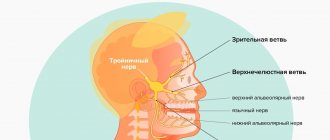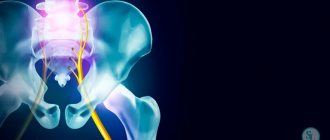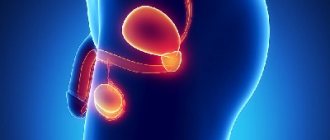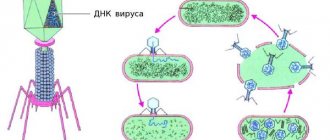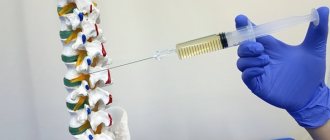Sciatica, or sciatica, is irritation in the back, lower back, legs, or buttocks. Discomfort manifests itself as a sharp and aching pain. Most often, inflammation worries people over 30 years of age. A quarter of the world's population complains of back pain, of which 20% are cases of inflammation of the sciatic nerve.
The nerve itself is one of the largest in the human body. It is he who has increased sensitivity and becomes inflamed more often than others. The reason is simple - the sciatic nerve is responsible for the mobility of the lower extremities, that is, for walking, running, squatting and other movements performed daily.
Inflammation of the sciatic nerve is a serious matter that requires immediate treatment. The nerve originates in the pelvic area and extends to most parts of the lower body. It covers the area from the lumbar region to the foot, which is half of the human body.
Causes of sciatica
The most common cause of the disease is a pinched nerve, which can be caused by various pathologies of the spine:
- Osteochondrosis is a thinning of the vertebral discs with the subsequent formation of bone growths that compress the nerve roots.
- Displacement of the vertebrae (spondylolisthesis), which causes the sciatic nerve to be pinched.
- Narrowing (stenosis) of the spinal canal.
- Intervertebral disc herniation and other diseases.
Also, neuritis of the sciatic nerve can occur due to hypothermia, against the background of infectious diseases, due to injuries and during pregnancy due to a shift in the center of gravity.
Symptoms of inflammation of the sciatic nerve
- Swelling at the site of inflammation
- Redness of the skin near the nerve
- Sharp shooting pains in the lower extremities. Usually the pain is mobile - goes from top to bottom
- Discomfort in the buttocks, thighs, lower legs or lower back
- Difficulty in movement - a person cannot straighten up. In this case, it is better to remain tilted, so the pain will be felt less
- Increased body temperature. Most often it does not exceed 38°C
- Weakness of muscles
Inflammation affects not only external organs, but also internal ones. The functioning of the genitourinary and digestive systems is disrupted. For example, involuntary urination may occur. In men, such injury leads to decreased libido.
If you ignore the symptoms of inflammation, they may disappear over time. However, they will quickly return and get worse if left untreated.
Treatment for inflammation of the sciatic nerve
At the first painful sensation, you should immediately contact a neurologist. Otherwise, the pain will only intensify and lead to complications. In the hospital, the specialist first stops the inflammation with painkillers. Afterwards, the doctor will begin to eliminate the cause of the disease. To diagnose the disease, a specialist will examine the damaged area of the body. Afterwards, the patient is sent for physiotherapeutic procedures - magnetic therapy, electrophoresis or UHF.
If the inflammation was caused by infectious pathogens, the patient is indicated for antibacterial and antiviral treatment of the affected area. For sciatica caused by a hernia, doctors resort to surgery using microdiscectomy.
Also, to eliminate the cause of inflammation, a neurologist may send you to other specialists, for example, a gynecologist, oncologist or urologist. It all depends on the cause of the disease, including the recovery period. However, in all cases, the patient is shown complete rest until the acute pain disappears.
Medicines
Photo: mediad.publicbroadcasting.net
Nonsteroidal anti-inflammatory drugs (NSAIDs) are prescribed to relieve pain and also reduce inflammation. This group of drugs has the following effects: analgesic, antipyretic and anti-inflammatory. These effects are achieved by inhibiting cyclooxygenase 1 and 2, which are involved in the synthesis of arachidonic acid, resulting in a decrease in the number of prostaglandins involved in the formation of pain and inflammation. Ketorolac has the greatest analgesic activity among the NSAIDs. This drug is quite powerful, in some cases its effectiveness is compared with one of the narcotic analgesics - morphine. It is not recommended to use the drug for a long time, as this can lead to the development of diseases of the gastrointestinal tract (gastritis, duodenitis, gastric and duodenal ulcers). When using the drug orally, a course of treatment of 1–2 weeks is allowed; intramuscular administration of the drug should not exceed 5 injections. Diclofenac is a representative of the group of non-steroidal anti-inflammatory drugs, which equally has analgesic and anti-inflammatory effects. It has a significantly less effect on the mucous membrane of the gastrointestinal tract, however, with long-term use, the following side effects may develop: discomfort or pain in the epigastric region (upper abdomen), bloating, nausea, diarrhea or, conversely, constipation and others.
Glucocorticosteroids have a pronounced anti-inflammatory effect, and their use is rational for the relief of severe pain. The most commonly used is prednisolone, which can be prescribed either as tablets or as injections. When prescribing prednisolone tablets, the patient must be reminded that the drug should be taken in the morning (7 - 9 hours). This is due to the rhythm of the adrenal glands and the release of hormones in accordance with the circadian rhythm. Unfortunately, the following side effects develop while taking glucocorticosteroids:
- increased blood pressure, which is especially dangerous for people suffering from arterial hypertension;
- weight gain;
- development of osteoporosis;
- an increase in blood glucose, which has a certain danger for people with diabetes;
- development of a steroid gastric ulcer with an increased risk of perforation and bleeding.
Muscle relaxants (mydocalm, tolperisone) are prescribed to eliminate muscle spasms that occur with sciatica. The drugs are well tolerated, only in some cases it is possible to develop side effects such as decreased blood pressure, headache, nausea, stool upset (diarrhea or, conversely, constipation), sleep disturbance, general weakness, tremor, and so on. Muscle relaxants are contraindicated in case of myasthenia gravis, allergies to any of the components of the drug, during pregnancy and lactation, as well as in childhood.
Among vitamin preparations during the treatment of sciatica, preference is given to B vitamins (B12 (cyanocobalamin), B1 (thiamine hydrochloride) and B6 (pyridoxine)). The fact is that B vitamins are used in the treatment of neurological diseases due to the fact that they help improve neuromuscular conduction and also have a neuroprotective effect. There are combination drugs, for example, neurobex neo, which contains vitamins B1, B6 and B12. However, it is worth noting that it is better to use injection forms, which are prescribed in a special course, after which the patient is transferred to tablet forms of the drug.
Symptoms and signs of the disease
The most common manifestation of the disease is pain. Pain can be determined by the following characteristics:
- The nature of the pain syndrome - the pain can be burning, shooting, so acute that people describe it as a dagger pierced into the spine.
- Localization of pain - pain runs along the spine in the lumbar region, spreads to the buttocks, to the back of the thigh, into the hole under the knee, down the lower leg and can even reach the fingertips.
- The strength of the pain syndrome - as a rule, with inflammation of the sciatic nerve, it varies. Sometimes the pain is weak and practically not felt, in other cases it confines the person to the bed, since every movement and standing position causes very severe pain.
- Duration - pain can be constant or appear in the form of attacks, which depends on the stage of the disease and the causes that caused it.
- Symmetry - usually the pain appears on one side, only in rare cases it affects both the left and right sides of the back and legs.
If you are wondering what sciatica is (inflammation of the sciatic nerve), how to treat this disease at home, then know that your first action should be to contact a neurologist
. The stage of prescribing treatment tactics is preceded by establishing the causes of sciatica, as well as confirming the diagnosis using diagnostic procedures.
Statistics
Sciatica is a fairly common disease in the age group from 35 to 50 years. It is at the most active age that the majority of initial visits to the doctor occur. The disease affects men more often than women. According to some experts, throughout their lives, up to 40% of people have at least once experienced an attack of pain in the sacral lumbar region, buttock or back of the thigh, but not all of these attacks become chronic and protracted. Cases of visiting a doctor are about 20-25 people per 100 thousand population.
What should you avoid if you have sciatica?
First of all, you should avoid hypothermia: do not stay in the cold or open wind for a long time, do not lie on cold surfaces, do not swim in cold water. To strengthen the immune system, you need to strengthen the body with exercise therapy, water treatments, yoga, and massage.
It will be important to change your occupation if it involves heavy physical work. It is also necessary to limit long stays in one position, sharp bends and turns of the body, running, fast walking, and transferring the entire body weight to the affected leg.
If you tend to be overweight, it is recommended to create a diet. Excess weight will aggravate the inflammatory process and increase pain.
Diagnostics
An examination to refute or confirm the doctor’s suspicions of sciatica is a necessary step. Based on the results of the survey and examination, it is impossible to say for sure that you have been struck down by this particular disease. After you come to the medical facility, the doctor will talk with you and, depending on the specific case, may prescribe:
- X-ray;
- CT;
- MRI;
- electroneuromyography.
It is worth understanding that it is almost impossible to independently recognize sciatica, even with the most characteristic symptoms, and prescribe treatment for this disease at home. To establish an accurate diagnosis and proper treatment, you need to see a doctor and undergo diagnostics.
What to do in case of an attack of pain?
At the first stage, first of all, you should observe bed rest, limit any movements, it is better to take a pose with support on your healthy leg. When lying on your back, it is recommended to place a small pillow under your lower back and knees. If you cannot lie down, you should shift your weight from one leg to the other alternately and move more often. With light dynamic movements, the muscles relax faster. Take pain medication as prescribed by your doctor.
At the second stage, you can use dry heating (a warm heating pad, a heat-retaining blanket) or a compress with herbal tinctures on the affected area. It is not recommended to use heat at elevated temperatures. In the absence of contraindications, you can perform a massage with rubbing and kneading of the lumbar region and limbs.
To prevent relapses, it will be useful to wear a fixing corset, and for pregnant women, a prenatal bandage if there is a noticeable increase in the abdomen. All intramuscular injections should be performed by trained medical personnel and placed only in the unaffected leg.
Establishing diagnosis
This disease is characterized by a rather complex diagnosis, the first stage of which is conducting reflexology tests for flexion and extension of the leg. To finally clarify the clinical picture, the following is prescribed as necessary:
- lab tests;
- X-ray of the affected area;
- MRI;
- ;
- electroneuromyography;
- Ultrasound of the pelvic area.
The task of a neurologist is to identify symptoms characteristic of sciatica, and treatment should be aimed at eliminating the causes of nerve fiber compression.
Surgery
It will not be possible to do without surgery if conservative treatment does not bring positive results within 3 months or there are pathologies that cannot be eliminated non-surgically. Therefore, the help of a spinal surgeon is required when:
- spinal fractures;
- intervertebral hernias that compress the sciatic nerve or spinal cord and provoke the development of radicular syndrome;
- spondylolisthesis;
- scoliosis;
- tumors of different nature.
In each case, different types of operations are used, differing not only in the method of execution, but also in the level of trauma, the duration and complexity of the rehabilitation period, as well as the number of risks and possible complications.
The easiest, least traumatic and safest methods of percutaneous surgery are recognized, which can be used to remove intervertebral hernias and treat compression fractures. But such methods can only be used if there is a small hernia, otherwise they are ineffective.
Percutaneous surgery methods include hydroplasty and nucleoplasty. In both cases, operations involve destruction of the nucleus pulposus of the intervertebral disc using instruments whose diameter does not exceed several millimeters. But when using hydroplasty, the nucleus pulposus is destroyed by liquid pressure, and when using nucleoplasty, it is destroyed by cold plasma, laser or radio waves. In both cases, the postoperative wound is so small that it does not require stitches. It is only covered with a sterile bandage, and the rehabilitation period proceeds almost unnoticed by the patient.
A somewhat more traumatic way to remove intervertebral hernias is endoscopic surgery, which involves resection using a lateral approach. The operation is performed using special endoscopic equipment equipped with a video camera. It is immersed into the patient’s body through pinpoint punctures, the diameter of which does not exceed 1 cm. In this way, hernias of different sizes can be removed, but when they are located in hard-to-reach places, the technique is ineffective.
For large, complex or even sequestered hernias that have led to spinal canal stenosis, the operation is performed through a soft tissue incision in the projection of the affected disc and is called microdiscectomy. It can be used in all cases with virtually no restrictions, with the exception of obvious contraindications to surgical intervention (respiratory or heart failure, pregnancy, etc.). Microdiscectomy uses special small surgical instruments. But since the operation is associated with injury to soft tissues, recovery after it is more difficult and longer than when using other methods of surgical treatment of intervertebral hernias.
If pain and inflammation of the sciatic nerve are caused by a compression fracture of the spine, the patient urgently requires vertebroplasty or kyphoplasty. Both operations have an almost identical technique, which consists in filling the flattened vertebra with a special, quickly hardening bone cement, which ensures the formation of a strong bone conglomerate. But kyphoplasty has broader indications for use and can be used for severe compression fractures with a significant reduction in the height of the vertebra, since it involves the initial restoration of its natural shape and size using a balloon inserted inside. It is gradually taken off, thereby restoring the parameters of the spine, and then deflated and removed.
If sciatic nerve pain is caused by scoliosis or spondylolisthesis, special metal structures consisting of plates and screws screwed into the vertebrae are used to fix the vertebrae in the correct position and restore the normal axis of the spine. They are introduced into the body through small incisions and remain in the human body for life.
Thus, pain and inflammation of the sciatic nerve can significantly poison life and deprive a person of his ability to work. But with timely treatment, they can be completely overcome and disability can be avoided. Therefore, if you experience regular pain, and even more so if you detect other of the above signs, we recommend that you immediately contact a neurologist or a spinal surgeon.
Only a qualified doctor can correctly diagnose and prescribe optimal treatment.
